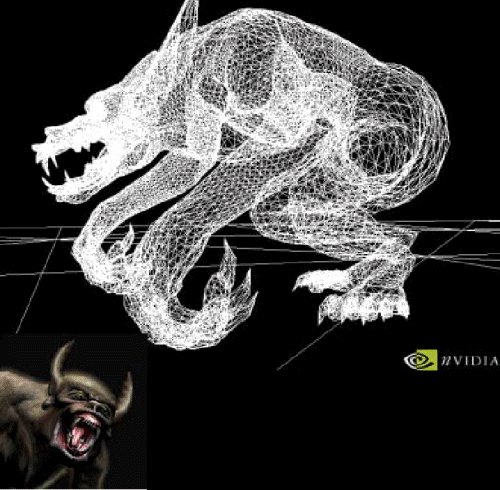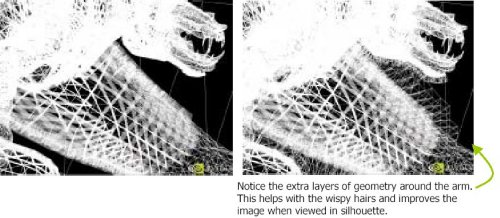'nfiniteFX II' Engine
The nfiniteFX II engine is an advancement to GeForce3's nfiniteFX engine and is basically used to describe nVIDIA's Pixel Shaders and Vertex Shaders. The documentation supplied by nVIDIA doesn't make any reference as to exactly what advancement have been made to GeForce4 Ti's pixel shader pipeline, just that there is a 50% performance improvement, nor any mention as to the level of DirectX Pixel Shader compliance. However it does state that nfiniteFX II utilises dual Vertex Shader engines as opposed to the single one found in GeForce3. Having two Vertex Shaders as well as the increased raw core speed of GeForce 4 Ti over GeForce 3 or GeForce3 Ti 500 represents a theoretical Vertex Shader performance increase of 2.5-3 times the performance.
nVIDIA uses the 'Wolfman' demonstration to describe what this increase in performance can achieve. As indicated by his name 'Wolfman' is a furry beast (not unlike our own Kristof) generated using 100,000+ polygons.

Wolfman's fur rendering, long since an issue in 3D graphics, is rendered using 6 concentric shells (as seen below). A texture map that covers Wolfman's body is used to control the colour and density of the fur.

Stranded materials such as hair, or Wolfman's fur in this case, tends to
reflect light more in some directions than others; its effect is recreated using
'anisotropic' lighting.
Wolfman is animated using skeletal animation. Vertex Shaders are very flexible for skeletal animation and Wolman's Vertex Mesh is layered over a 61-bone skeleton.

